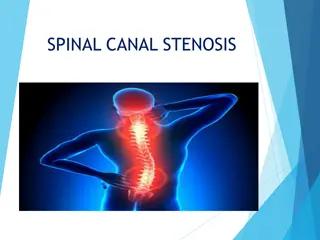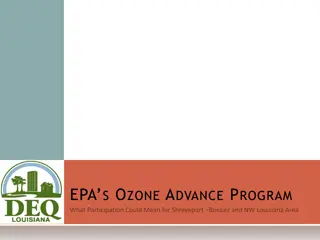Atelectasis: Causes and Classification
Atelectasis, or lung collapse, is a condition characterized by loss of lung volume leading to inadequate oxygenation. This article delves into the causes and classification of atelectasis, including resorption atelectasis due to bronchial obstruction and compression atelectasis associated with fluid accumulation in the pleural cavity. Learn about the mechanisms and types of atelectasis explained by Dr. Fatima Obeidat.
Download Presentation

Please find below an Image/Link to download the presentation.
The content on the website is provided AS IS for your information and personal use only. It may not be sold, licensed, or shared on other websites without obtaining consent from the author.If you encounter any issues during the download, it is possible that the publisher has removed the file from their server.
You are allowed to download the files provided on this website for personal or commercial use, subject to the condition that they are used lawfully. All files are the property of their respective owners.
The content on the website is provided AS IS for your information and personal use only. It may not be sold, licensed, or shared on other websites without obtaining consent from the author.
E N D
Presentation Transcript
Diseases of the Respiratory system Fatima Obeidat, MD Assistant Professor Consultant: Histopathologist /Neuropathologist 2
I. ATELECTASIS (COLLAPSE) 3
- Is loss of lung volume caused by inadequate expansion of air spaces. - It results in shunting of inadequately oxygenated blood from pulmonary arteries into veins, thus giving rise to hypoxia. 4
- On the basis of the underlying mechanism , atelectasis is classified into three forms: 1. Resorption atelectasis 2. Compression atelectasis 3. Contraction atelectasis 5
1. Resorption atelectasis. : - Occurs when an a total obstruction of bronchus prevents air from reaching distal airways. - The air already present gradually becomes absorbed, and alveolar collapse follows. 6
1. The most common cause of resorption collapse is total obstruction of a bronchus by mucus or mucopurulent plug a. Postoperatively b. Complicate bronchial asthma, bronchiectasis, chronic bronchitis, 7
2. Obstruction by: a. Tumor. b. Foreign body aspiration, particularly in children. 8
2. Compression atelectasis. - Sometimes called passive or relaxation atelectasis) - Is usually associated with accumulation of fluid, blood, or air within the pleural cavity, which mechanically collapses the adjacent lung. 10
- Causes: a. Pleural effusion, caused most commonly by congestive heart failure (CHF). b. Leakage of air into the pleural cavity (pneumothorax) c. Hemothorax 11
C.- Contraction atelectasis. - Called cicatrization atelectasis - Occurs when either local or generalized fibrotic changes in the lung or pleura or prevents expansion of air spaces 13
Note - Atelectasis (except when caused by contraction) is potentially reversible and should be treated promptly to prevent hypoxemia and superimposed infection of the collapsed lung. 14
OBSTRUCTIVE PULMONARY DISEASES 15
The major diffuse obstructive disorders are 1. Emphysema, 2. Chronic bronchitis, 3. Bronchiectasis, 4. Asthma. 16
Emphysema - Abnormal permanent enlargement of the air spaces distal to the terminal bronchioles accompanied by destruction of their walls without fibrosis with destruction of the alveolar septae and no fibrosis 17
Types of emphysema - There are four major types of emphysema: (1) Centriacinar, (2) Panacinar (3) Distal acinar, (4) Irregular. 19
1. Centriacinar (Centrilobular) Emphysema - The central or proximal parts of the acini, formed by respiratory bronchioles, are affected, while distal alveoli are spared 20
- The lesions are more common and severe in the upper lobes. - This type of emphysema is most commonly caused by cigarrete smoking 22
2. Panacinar (Panlobular) Emphysema - The acini are uniformly enlarged, from the level of the respiratory bronchiole to the terminal blind alveoli - Tends to occur more commonly in the lower lung zones - It occurs in 1-antitrypsin deficiency. 23
3. Distal Acinar (Paraseptal) Emphysema - It involves the distal part of the acinus. - The proximal portion of the acinus is normal 24
- The characteristic finding is the presence of multiple, contiguous, enlarged air spaces ranging in diameter from less than 0.5 mm to more than 25
2.0 cm, sometimes forming cystic structures that, with progressive enlargement, are referred to as bullae - It is seen most often in cases of spontaneous pneumothorax in young adults. 26
Emphysema 27
Clinical Features -In emphysema with no "bronchitic" component is one in which the patient is - Dysppnea is the first symptom -Barrel-chested with prolonged expiration, - Sitting forward in a hunched-over position, attempting to squeeze the air out of the lungs with each expiratory effort. 28
- Dyspnea and hyperventilation are prominent, so that until very late in the disease, gas exchange is adequate and blood gas values are relatively normal. - Because of prominent dyspnea and adequate oxygenation of hemoglobin, these patients sometimes are called "pink puffers." 29
2. Chronic Bronchitis - Is common among cigarette smokers and urban dwellers - The diagnosis of chronic bronchitis is made on clinical grounds: - It is defined by the presence of a persistent productive cough for at least 3 consecutive months in at least 2 consecutive years. 30
Note -In early stages of the disease, the productive cough raises mucoid sputum, but airflow is not obstructed. 31
- A subset of bronchitic patients, especially heavy smokers, develop chronic outflow obstruction, usually with associated emphysema 32
- These environmental irritants a. Induce hypertrophy of mucous glands in the trachea and main bronchi, b. Marked increase in mucin-secreting goblet cells in the surface epithelium of smaller bronchi and bronchioles. 33
Note - The defining feature of chronic bronchitis (mucus hypersecretion) is primarily a reflection of large bronchial involvement - The morphologic basis of airflow obstruction in chronic bronchitis is more peripheral and results from: 34
(1) Small airway disease (chronic bronchiolitis) is induced by: a. Goblet cell metaplasia with mucous plugging of the bronchiolar lumen, b. Inflammation, c. Bronchiolar wall fibrosis, (2) Coexistent emphysema 35
. Note - Small airway disease ( chronic bronchiolitis) is an important component of early and relatively mild airflow obstruction, - Significant airflow obstruction is almost always caused by emphysema - chronic bronchitis with 36
Clinical Features - In patients with chronic bronchitis, a prominent cough and the production of sputum may persist indefinitely without ventilatory dysfunction - Some patients develop significant COPD with outflow obstruction. 37
- This clinical syndrome is accompanied by hypercapnia, hypoxemia, and (in severe cases) cyanosis (hence the term "blue bloaters"). - With progression, chronic bronchitis is complicated by pulmonary hypertension and cardiac failure . - Recurrent infections and respiratory failure are constant threats. 38
3. Asthma - Asthma is a chronic inflammatory disorder of the airways that causes recurrent episodes of wheezing, breathlessness, chest tightness, and cough, particularly at night and/or early in the morning. 40
1. Atopic Asthma - This is the most common type of asthma, - Usually beginning in childhood, 41
- A positive family history of atopy and/or asthma is common, - Asthmatic attacks are often preceded by allergic rhinitis, urticaria, or eczema. - The disease is triggered by environmental antigens, such as dusts, pollen, and foods 42
2. Non-Atopic Asthma - No evidence of allergen sensitization, - A positive family history of asthma is less common. 43
d. Respiratory infections due to viruses (e.g., rhinovirus, parainfluenza virus) and inhaled air pollutants (e.g., sulfur dioxide, ) are common triggers. - It is thought that virus-induced inflammation of the respiratory mucosa lowers the threshold of the subepithelial vagal receptors to irritants. 44
Note: -Although the connections are not well understood, the ultimate humoral and cellular mediators of airway obstruction (e.g., eosinophils) are common to both atopic and nonatopic variants of asthma, so they are treated in a similar way. 45
3. Drug-Induced Asthma - Several pharmacologic agents provoke asthma--aspirin being the most striking example - Patients with aspirin sensitivity present with recurrent rhinitis and nasal polyps, urticaria, and bronchospasm. 46
- The precise mechanism remains unknown, but it is presumed that aspirin inhibits the cyclooxygenase pathway of arachidonic acid metabolism without affecting the lipoxygenase route, thereby shifting the balance of production toward leukotrienes that cause bronchial spasm. 47























